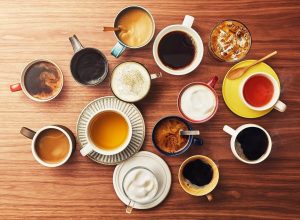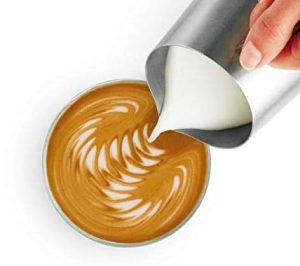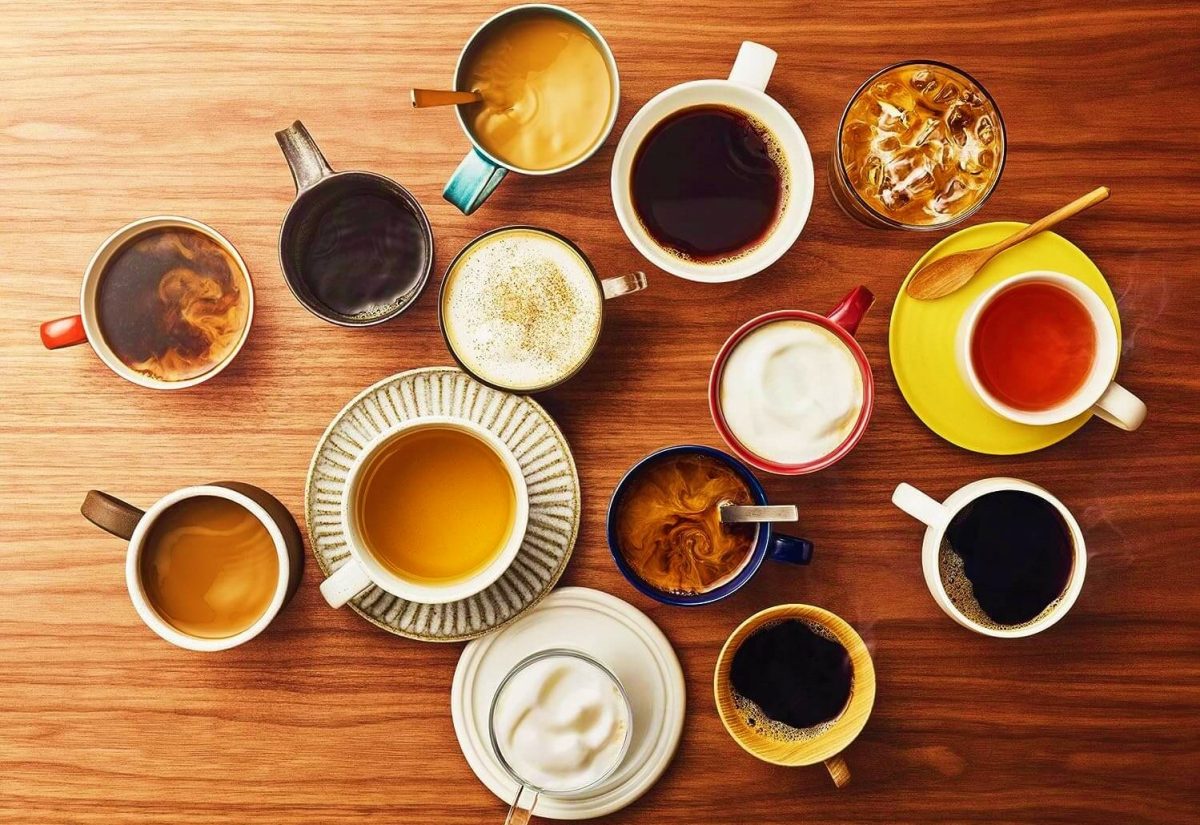How to Make Perfect Coffee at Home, Step-by-Step Guide: In the quiet moments before dawn or during the afternoon lull, there’s an art to brewing the perfect cup of coffee that transcends the mere act of preparation. Making coffee at home is a personal ritual, transforming the mundane into a comforting ceremony. As you embark on this journey, your kitchen becomes a sanctuary, and each step in the process is a deliberate dance that leads to the aromatic crescendo in your mug.
This step-by-step guide is your passport into home coffee brewing, where the alchemy of water meeting coffee grounds unfolds into a symphony of flavors and aromas. Whether you’re a novice looking to elevate your morning routine or a seasoned enthusiast seeking the nuances of a handcrafted brew, this journey will demystify the process, turning your kitchen into a haven for the coffee connoisseur in you.
So, set aside the pre-packaged notions and embrace the tactile joy of selecting beans, measuring grounds, and coaxing the perfect infusion. Your home is about to become a haven for the sensory delights of coffee-making, where each cup tells a story, and every sip is a moment to be relished. Welcome to crafting your coffee, one step at a time.
What is Coffee?

Coffee is a popular and globally consumed beverage made from the coffee plant’s roasted seeds, commonly called coffee beans. These beans are the pit of the cherry-like fruits produced by the coffee plant. The two most common and commercially significant species of coffee plants are Coffea arabica and Coffea canephora (commonly known as robusta).
Key Features of Coffee:
-
Caffeine Content:
- Coffee is renowned for its caffeine content, a natural stimulant that touches the dominant nervous system. Caffeine contributes to the drink’s stimulating effects, promoting alertness and reducing the perception of fatigue.
-
Cultivation and Varieties:
- Coffee is grown in various regions worldwide, often in tropical climates. Different growing conditions, altitudes, and soil types contribute to the distinct flavor profiles of various coffee varieties.
-
Processing:
- The journey from coffee cherry to brewed cup involves several steps: harvesting, processing, drying, milling, roasting, grinding, and brewing. Each stage influences the final flavor and aroma of the coffee.
-
Roasting:
- Coffee beans are typically roasted before consumption. The roasting process transforms the green, raw beans into aromatic and flavorful coffee. Roasting levels can vary, producing light, medium, or dark roasts, each with unique characteristics.
-
Brewing Methods:
- Coffee can be prepared using numerous methods, including drip brewing, espresso machines, French press, pour-over, and more. Each method influences the extraction process, impacting the final cup’s strength, body, and flavor.
-
Flavor Profile:
- Coffee is known for its varied flavor profiles, including notes of acidity, sweetness, bitterness, and various aromatic nuances. Factors such as the origin of the beans, roasting level, and brewing method contribute to the overall taste experience.
-
Social and Cultural Significance:
- Beyond its physical properties, coffee holds significant cultural and social importance. It often catalyzes social gatherings, business meetings, and leisurely conversations. Coffeehouses have become cultural hubs in many societies.
-
Health Considerations:
- Coffee is associated with both benefits and considerations related to health. While moderate coffee consumption is considered safe and may offer health benefits, excessive intake can lead to adverse effects such as insomnia or digestive issues.
Coffee has become an integral part of daily life for millions worldwide, celebrated for its refreshing properties and the rich tapestry of experiences it weaves across cultures and communities.
You Will Need Ingredient List to Make the Coffee:

The ingredient list for making coffee depends on the brewing method you choose. Here’s an essential list for making a simple cup of brewed coffee using a drip coffee maker or a pour-over method:
Ingredients:
1. Coffee Beans:
-
- Choose high-quality coffee beans. The type of beans and their origin will influence the flavor of your coffee. Popular varieties include arabica and robusta.
2. Water:
-
- Use clean, filtered water. The water’s quality affects your coffee’s taste, so ensure it’s fresh and impurities-free.
Optional Additions:
3. Sweeteners:
-
- If you prefer sweet coffee, sugar, honey, agave syrup, or other sweeteners.
4. Milk or Cream:
-
- Dairy or non-dairy milk options include whole, skim, almond, or soy milk.
5. Flavorings:
-
- Vanilla extract, cinnamon, or other flavorings add a unique twist to your coffee.
Tools and Equipment:
6. Coffee Grinder:
-
- If you’re using whole beans, you’ll need a coffee crusher to grind the beans to your preferred coarseness before brewing.
7. Brewing Device:
-
- Drip coffee maker, pour-over cone, French press, espresso machine, or another brewing device.
8. Coffee Filter:
-
- Using a drip coffee maker or pour-over method, you may need a paper or metal coffee filter.
9. Kettle:
-
- For heating water, unless your brewing device has a built-in water heating mechanism.
10. Coffee Mug or Cup:
-
- Enjoy your freshly brewed coffee.
How to Make Perfect Coffee at Home, Step-by-Step Guide:

Ingredients and Tools:
Coffee Beans: High-quality coffee beans of your choice.
Water: Clean, filtered water.
Optional Additions: Sugar, milk, cream, or flavorings.
Tools: Coffee grinder, brewing device (e.g., drip coffee maker, pour-over cone), kettle, coffee filter (if needed), coffee mug or cup.
Steps:
1. Measure Coffee Beans:
Measure the coffee beans based on your preferred strength. A standard ratio is 1 to 2 table spoons of coffee grounds for every 6 ounces of water.
2. Grind Coffee Beans:
If using whole beans, grind them just before brewing. Regulate the grind size based on your chosen preparation method.
3. Boil Water:
Heat clean, filtered water to the ideal temperature, typically between 195°F to 205°F (90°C to 96°C).
4. Set Up Brewing Device:
Choose your brewing method. This could be a drip coffee maker, pour-over cone, French press, or another method. If using a drip coffee maker, add water to the reservoir.
5. Add Coffee Grounds:
Place the ground coffee into the coffee filter or brewing device. Follow the recommended amount for your chosen method.
6. Brew Coffee:
Start the brewing process according to your selected method. Allow the water to extract the flavors from the coffee grounds.
7. Pour Coffee:
Once brewed, carefully pour the coffee into your mug or cup.
8. Optional Additions:
Customize your coffee by adding sugar, milk, cream, or desired flavorings.
Enjoy:
Take a moment to savor the aroma and taste of your freshly brewed coffee. Adjust the ingredients and brewing method to suit your preferences.
Tips:
Experiment with different coffee-to-water ratios and grind sizes to find your perfect cup.
Use clean equipment to maintain the purity of your coffee’s flavor.
Explore various brewing methods to discover your favorite.
Brewing coffee at home is a delightful journey of experimentation and personalization. Embrace the art of coffee-making and relish the rewarding experience of enjoying a cup tailored to your taste.
Expert Tips for Perfect Coffee:

- Chore your coffee beans just before brewing to preserve the flavor. Invest in a quality burr grinder for consistent results.
- Experiment with different coffee-to-water ratios to find the strength you prefer. A standard ratio is 1 to 2 table spoons of coffee grounds for every 6 ounces of water.
- Use clean, filtered water for brewing. Impurities in water can affect the flavor of your coffee.
- Brew coffee with water between 195°F and 205°F for optimal extraction. Too hot or too cold water can result in uneven flavor.
- Adjust the brewing time based on your method. Experiment with shorter or longer brew times to control the strength of your coffee.
- Match the grind size to your preparation method. For example, use a coarser grind for the French press and a finer for espresso.
- Preheat your brewing equipment, especially if using methods like pour-over or espresso. This ensures even extraction.
- Select high-quality, fresh coffee beans. The origin and roast level contribute to the unique flavor profile of your coffee.
- Stock your coffee beans in an airtight container in a cool, dark place. Avoid keeping them in the fridge or freezer.
- Regularly clean your coffee maker, grinder, and brewing equipment to prevent residual oils and flavors from impacting future brews.
- Try different brewing methods to discover the nuances of flavor. From pour-over to French press, each method offers a unique experience.
- When pouring water over coffee grounds, do it slowly and evenly. This helps achieve an even saturation and extraction.
- Don’t be afraid to customize your coffee with sweeteners, milk, or flavorings to suit your taste.
- Sip your coffee slowly to appreciate the complexity of flavors. Let it cool slightly for a fuller taste experience.
- Experiment with single-origin coffees to explore the distinct characteristics of beans from different regions.
Mastering the art of coffee-making involves a combination of precision, experimentation, and personal preference. With these expert tips, elevate your home brewing experience and savor every cup of coffee as a unique and delightful creation.
Conclusion:
Brewing coffee at home is more than a routine; it’s a personalized journey that transforms making a cup into an art form. From selecting the finest beans to perfecting the grind size, water temperature, and brewing method, each step contributes to the symphony of flavors that dance within your mug.
As you embark on this adventure, remember that the perfect cup of coffee is the one that brings joy to your senses. Whether you prefer the aromatic richness of a dark roast or the bright, lively notes of a light roast, the beauty lies in the process and the satisfaction of crafting a cup tailored to your taste.
With every measured scoop and the comforting sound of brewing, you’re not just making coffee but creating a moment. Whether it’s a quiet morning ritual or a shared cup with friends, each sip celebrates the craftsmanship that unfolds in your kitchen.
So, let your home be the canvas and your coffee-making endeavors, the brush strokes creating a masterpiece. Whether you’re a seasoned barista or a novice experimenting with flavors, may each cup be a testament to the joy found in the art of making coffee at home. Cheers to the warmth, the aroma, and the endless possibilities that a simple cup of coffee brings into your daily life.
FAQs:
Will this recipe work without sugar?
The coffee-making recipe provided earlier will work perfectly fine without sugar. Making coffee at home is highly adaptable to personal preferences, and if you prefer your coffee without sugar, you can easily omit that ingredient from the process.
Here’s a quick recap of the critical steps without sugar:
How to Make Coffee at Home: A Step-by-Step Guide
Ingredients and Tools:
- Coffee Beans: High-quality coffee beans of your choice.
- Water: Clean, filtered water.
- Optional Additions: Milk, cream, or flavorings if desired.
Tools:
- Coffee Grinder, Brewing Device: Drip coffee maker, pour-over cone, or your preferred method.
- Kettle, Coffee Filter (if needed): For heating water and filtering coffee.
Steps:
Measure Coffee Beans:
- Measure the coffee beans based on your preferred strength.
- Grind Coffee Beans to preserve the flavor.
Boil water:
- Heat clean, filtered water to the ideal temperature.
Set Up Brewing Device:
- Choose your brewing method.
Add Coffee Grounds:
- Place the ground coffee into the coffee filter or brewing device.
Brew Coffee:
- Start the brewing process according to your selected method.
Pour coffee:
- Once brewed, carefully pour the coffee into your mug or cup.
Optional Additions:
- Customize your coffee by adding milk, cream, or any desired flavorings.
Enjoy:
- Take a moment to savor the aroma and taste of your freshly brewed coffee.
Feel free to correct the recipe based on your preferences. Whether you enjoy your coffee black or with added elements like milk or cream, the choice is entirely yours. Making coffee at home is versatile and enjoyable, permitting you to create the perfect cup to suit your taste buds.
What is the purpose of beating the coffee with water?
Beating or frothing coffee with water is typically a step in preparing certain traditional coffee beverages, particularly in some Middle Eastern and South Asian coffee-making methods. The purpose of beating the coffee with water is to create a frothy and creamy texture in the final cup. This technique is often associated with preparations like Turkish Coffee or Indian filter coffee.
Here’s a breakdown of the purpose and process:
- Texture and Consistency:
- Beating the coffee with water creates a frothy layer on top of the coffee. This foam adds a velvety and creamy consistency to the beverage, enhancing the overall mouthfeel.
- Aroma Release:
- The process of beating or frothing allows for the release of aromatic mixes from the coffee. This contributes to a more aromatic and flavorful cup.
- Traditional Presentation:
- In some cultures, the frothy layer is integral to the coffee-drinking experience. It adds to the visual appeal of the beverage and is often associated with traditional and ceremonial coffee preparations.
- Coffee Grounds Incorporation:
- Beating the coffee with water can help incorporate the coffee grounds into the liquid, ensuring a more homogeneous distribution. This is particularly relevant in coffee preparations where the grounds are not filtered out before serving.
How it’s done:
Turkish Coffee:
In Turkish coffee preparation, finely ground coffee, water, and sugar (if desired) are combined in a unique pot called a cezve. The mixture is slowly heated, allowing the coffee to foam and froth. The coffee is not filtered, and the grounds settle at the bottom of the cup.
Indian Filter Coffee:
In South Indian filter coffee, hot water is poured over a puck of finely ground coffee in a metal filter. The decoction is collected and traditionally poured back and forth between two containers to create foam before being mixed with hot, frothy milk.
While beating or frothing coffee is uncommon in all brewing methods, it adds a unique and culturally significant element to specific traditional coffee preparations. The choice to incorporate this step depends on the specific coffee beverage you are preparing and the desired sensory experience.
What’s a Hot Coffee?
A “hot coffee” is served at a warm or hot temperature. It is the most traditional and common way of serving coffee. Hot coffee is prepared by brewing coffee beans with hot water, typically drip brewing, pour-over, French press, or espresso.
Characteristics of Hot Coffee:
- Temperature: Hot Coffee is typically served at temperatures ranging from 160°F to 185°F (71°C to 85°C). The exact temperature can vary based on personal preference and the brewing method.
- Brewing Methods: Various brewing methods can be used to prepare hot coffee. Standard methods include drip brewing, where hot water is poured over coffee grounds, and espresso brewing, which involves pressurized hot water passing through finely ground coffee.
- Customization: Hot Coffee can be customized to suit individual preferences. Some people enjoy black, while others add sugar, milk, cream, or flavorings to create a personalized cup.
- Varieties: Hot Coffee comes in various varieties depending on the bean type, the roast level, and the brewing method. Common types include black Coffee, cappuccino, latte, Americano, and more.
- Serving Styles: Hot Coffee is typically served in various containers, such as mugs or cups. Saucers and spoons often accompany it and, in certain cultures, may be presented in unique traditional vessels.
Hot coffee is a classic and comforting beverage enjoyed worldwide. The warmth and aroma of a well-brewed cup of hot coffee make it a popular choice for various occasions, whether a morning ritual, a pick-me-up during the day, or a cozy moment to unwind in the evening.

